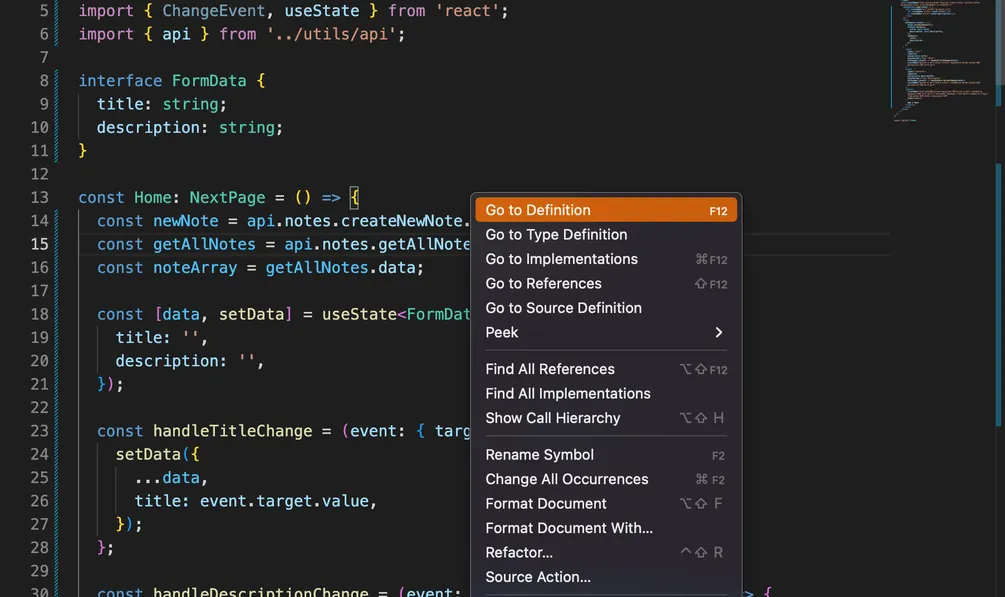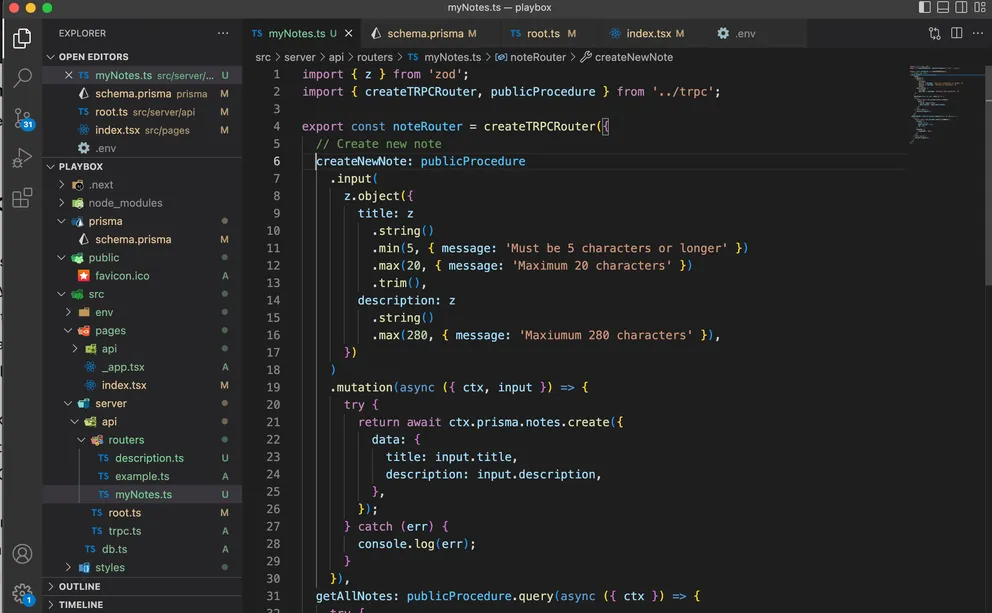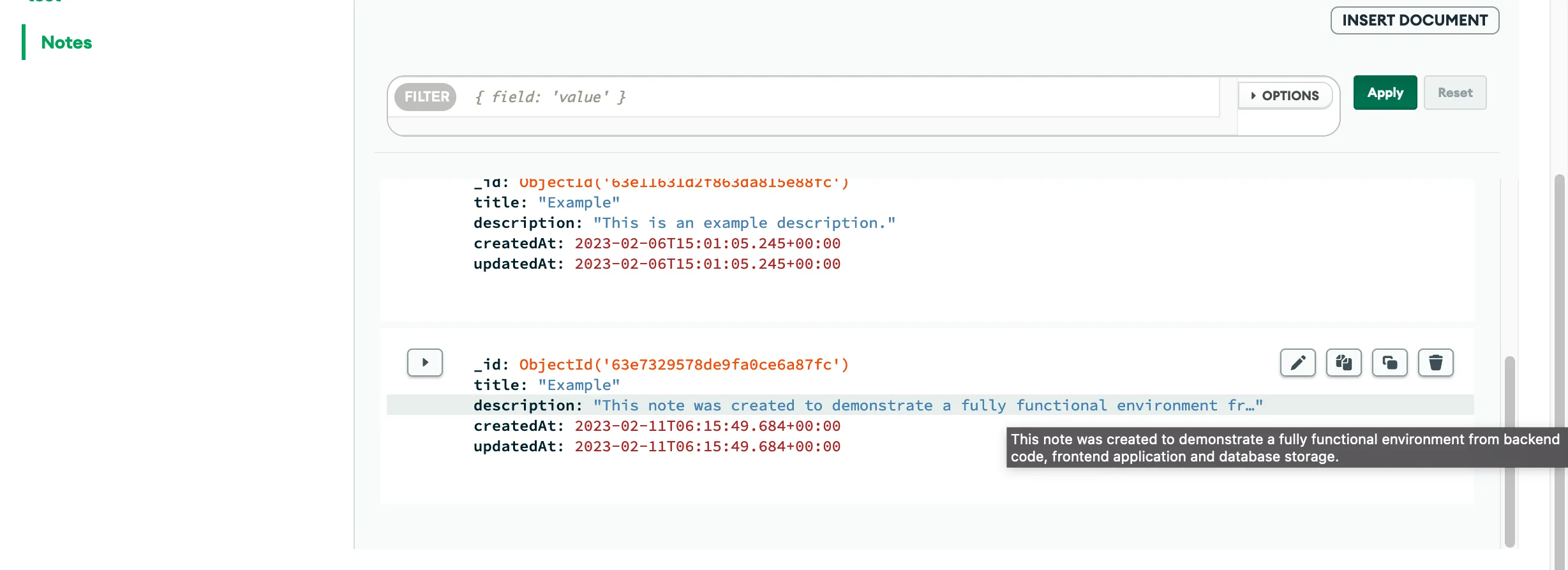tRPC

Introduction
tRPC stands for TypeScript Remote Procedure Call. It’s a simple and lightweight library for creating APIs using a singular programming language TypeScript. It operates as a protocol to call your backend functions directly from the frontend, unlike other popular options such as GraphQL, which relies on schemas and code generation.
Brief History
tRPC was created by Alex / KATT and was first released in 2020, with tRPC/client and tRPC/server.
Since then there’s been many iterations and versions of the product, with its latest version 10.9.0 being released 11th of Jan 2022.
Currently, its latest versions are seeing around 40k weekly downloads and the repository has a respectable 20k stars on GitHub. The interest in the product has increased recently in social media, and been praised by several prominent full-stack developers for its features on how it bridges the gap between front and backend, seamless workflow and overall ease-of-use in a completely typesafe eco-system.
According to the product creator himself, version 9 should be viewed as version 1, whereas the newly released version 10 should be considered version 2.
Version 10 brings in performance improvements as well as quality-of-life enhancements. Some of the changes include:
- Simplified backend writing of routers and procedures.
- Made client calls to backend procedures more easily defined.
- Allows to seamlessly navigate between client/server code with a single mouse click.
- Simplified the operation of creating complex inference helpers.
- Middlewares are now reusable and chain.

tRPC’s search popularity over the last 12 months.
Features
One of the most unique features of tRPC is how it brings type-safety between server and client code, and how well it’s handled. Instead of getting uncaught type errors on runtime, Typescript will detect type-related issues between server and client before the file is even saved. In addition to this, RPC allows you to quickly update endpoint names in one place and update all associated client/server files at the same time, and navigate between script files by simply CMD+click or right-click + <Go to definition>.
Since tRPC does not rely on schemas or code generation, and rather is a protocol for accessing backend functions to the frontend, it allows a more seamless workflow for the developer, and a lightweight well performing application with a tiny footprint for the end user.
Automatic type-safety
While this is a Typescript feature, and not isolated to tRPC it allows for an eco-system where the client will notify you of errors even before you save the files.
Framework agnostic
tRPC works will all JavaScript frameworks and runtime. It’s easy to add to already existing projects.
Autocompletion
tRPC will attempt to auto-complete your queries, speeding up development and ensuring the use of valid query data.
Great DX
tRPC offers great workflow through all of its features, and provide an overall excellent developer experience.
Example of use
In the example we’re using a T3 app, configured with tRPC, Prisma, MongoDB, Next.js and Typescript.
- MongoDB is our database. - tRPC will be used to create our endpoint. - Prisma to handle data for our database.In our front-end client folder, we have defined an endpoint the following way. We’re going to take a closer look at how tRPC can be used to tie everything together from backend functions, frontend rendering and an updated database with a new entry while highlighting some of tRPC’s excellent workflow and QoL features.
import { api } from "../utils.api"
const newNote = api.notes.createNewNote.useMutation()-
apiis the client-side entry point in this use case. Containing ourNext.jsapp-wrapper as well as typesafe react-query hooks. -
notesis the name given to ournotesRouterin ourappRouter. -
Whereas,
createNewNotedefines the endpoint for handling ourCREATEoperations with the procedures we’ve created on the backend.

We can easily navigate to it by right-clicking -> go to definition and it will take us straight to our router function where our procedures are being defined.

A single router typically contains several procedures. In the case of our noteRouter, it would make sense to have procedures or endpoints that handle all of your CRUD operations:
Read all notes, read a single note defined by ID, create a new note, update the note and delete an existing note. In this example, we’re specifically going to take a closer look at a CREATE operation endpoint using tRPC’s library.
-
createTRPCRouteris the function we wrap all of our procedures in by callingpublicProcedure, after our name definition. -
Procedurescan be viewed as the equivalent of a REST endpoint. -
Defining a
Procedureis the same no matter the operation. i.e queries or mutations.
Calling the procedure builder input, which is where we define the content of our endpoint. In this case, we’re using Zod for some basic validation and creating title and description keys with the type of string.
export const noteRouter = createTRPCRouter({ // Create new note createNewNote: publicProcedure .input( z.object({ title: z .string() .min(5, { message: 'Must be 5 characters or longer' }) .max(20, { message: 'Maximum 20 characters' }) .trim(), description: z .string() .max(280, { message: 'Maxiumum 280 characters' }), }) )Now that we’ve defined our input we can use the procedure builder .mutation to either alter or create a new instance with those definitions.
model Notes { id String @id @default(auto()) @map("_id") @db.ObjectId title String description String createdAt DateTime @default(now()) updatedAt DateTime @updatedAt}In this use case we’re using Prisma to easily read or write data to our database, above is the model for our Notes.
.mutation(async ({ ctx, input }) => { try { return await ctx.prisma.notes.create({ data: { title: input.title, description: input.description, }, }); } catch (err) { console.log(err); }}),In our asynchronous function we call context and our previously defined input and call ctx.prisma.notes.create to create a new instance on our database where the title is that of input.title, and description is that of input.description.
Using the same method as before, we can right-click on createNewNote to take us back to our front-end/client code.
const newNote = api.notes.createNewNote.useMutation()Where we’ve called our backend function and stored it in a variable newNote. Within the rendering code, we’ve created a simple form, with text input for the title and description, and added the following script to run on submit:
<form className="ml-5 rounded bg-white p-5" onSubmit={(event) => { event.preventDefault(); newNote.mutate({ title: data.title, description: data.description, }); setData({ title: '', description: '', }); }}>The repository is configured with a public MongoDB cluster with our Prisma model. On submission, the form should now add a new entry to the database with the content of title.value and description.value.

A very basic layout render of the form as well as already existing notes in the database on the right-hand side. Submitting the form should now update the database with a new entry:

Strengths
tRPC is lightweight
Since tRPC is a protocol or method for accessing backend functionality, it allows for better-performing applications without any code generation or runtime bloat.
tRPC uses Typescript
This can be viewed as both a strength and a weakness. On the one hand, it allows for a uniform coding language and infrastructure between the backend and frontend, improving workflow and communication between the team.
While on the other hand, if Typescript is not the preferred programming language within the team or organization, other options might be preferable.
tRPC works great in a mono repo
With how tRPC communicates between client and server code, you are encouraged to use a singular repository, and several highlighted features are only accessible if you do so. On a smaller scale, there are many benefits to doing so. It’s easier to navigate between client/server code, make changes and ensure type safety within the entirety of your code base. No more uncaught type errors.
Quick development
The fastest and easiest way to develop an API. Uses type interference, which means the type of data is automatically detected, which particularly boosts development in the early stages. Integrate with IDEs. With some familiarity with tRPC and well-synergized technologies, such as Next.js and Prisma, you can have functional endpoints up and running within minutes using a pre-configured project package. One such option is T3-app.
Weaknesses
tRPC uses Typescript
While a front-end team certainly has knowledge of Javascript and may be well versed in Typescript, the same might not be the case for a backend team. There is a greater variety in programming languages typically used for the backend than for frontend, meaning that Typescript may not always be the most suitable choice.
While strict static typing leaves a lot of benefits, it can be frustrating and cumbersome to learn, especially for junior-level developers.
Works best in a mono repo
Since many of tRPC’s features benefit from using a singular repository, it might not be the best option if the development team has a need or requirement for a heavily siloed frontend and backend.
Scalability
- In larger-scale projects, in a larger team, it’s often beneficial to come up with a clear set of rules and a schema that everyone can work from.
tRPCdoes not offer this. - If your app is getting increasingly more complex and requires more nuanced requirements, other options provide better solutions to manage and maintain your server-side code base.
Comparison
Web Dev Simplified asks recently in a video if tRPC spells the end to REST/graphQL. While his title is almost certainly to generate views and clicks, the video does highlight some of the unique benefits of tRPC as well as its simplicity of use. When possible, people tend to gravitate toward the option that provides them with the simplest solution. tRPC often does so intelligently and seamlessly.
However, there are dilemmas and industry requirements that tRPC cannot properly solve, and in such cases, there might be better options out there. One such popular option is graphQL.

GraphQL
In short, graphQL is a query language for APIs and a runtime for fulfilling those queries with your existing data. While REST APIs will always return the entire object the client is requesting, GraphQL allows you to query your API and return only the data you’re interested in. With GraphQL the client controls the data returned, not the server.
GraphQL queries can access several properties at once by following references between them, making it possible to fetch all the data you need in a single request. Significantly reducing the bandwidth footprint.
Similar to tRPC, GraphQL offers type safety. GraphQL is organized in terms of types and fields, instead of endpoints.
Scalability and maintenance
With GraphQL you can easily add new fields and types to the API without impacting or breaking existing queries. As a result, the server code base becomes easier to maintain and allows for API growth with less hassle and complication.
GraphQL is being used by industry juggernauts such as Facebook, Github, Airbnb, Twitter and many others.
Which is better? tRPC or GraphQL?
tRPC is still very much in its infancy, and while many of its features are excellent it cannot match GraphQL's scalability and network efficiency. Nor does it need or try to. In my view, they can coexist not as competing technologies, but as technologies that both offer their strength and weaknesses depending on use cases.
Use GraphQL if:
-
It’s a large-scale project, with the need for well-defined schemas, maintenance and future development requirements.
-
if your team is either heavily siloed or uses multiple programming languages.
Use tRPC if:
- You are looking to learn to create your APIs.
- You are working in a smaller development team or working as a freelancer.
- You use Typescript as your preferred programming language.
- You are developing a smaller-scope application.
Summary
tRPC offers an excellent introduction to creating APIs. Using it is intuitive, fast and efficient. With some experience, you can get functional endpoints up and running within minutes. Whether you are a junior when it comes to the backend or web development in general, or an experienced full-stack developer tRPC should offer a lot of welcome features to new and existing projects.
As Chris Bautista states in his overview video
Now everyone can call themselves a full-stack developer.With some learning and familiarity with the tRPC library and excellent pre-configured projects such as T-3 App, it’s not too far from the truth. Maybe for your next project, you too will check it out?
Credits
- Truls Haakenstad Haugen || @Menubrea
Resources
tRPC Crash Course tRPC Crash Course Project T-3 with tRPC - Create Chat Application
References
- tRPC server
- tRPC client
- tRPC repository
- tRPC official site
- T3 App on tRPC
- Chris Bautista overview
- tRPC/ GraphQL comparison
- Web Dev Simplified overview
- tRPC version 10 changes
- TypeScript/Javascript comparison
- tRPC/GraphQL comparison
- GraphQL official site
- TypeScript official site
- tRPC interview with creator